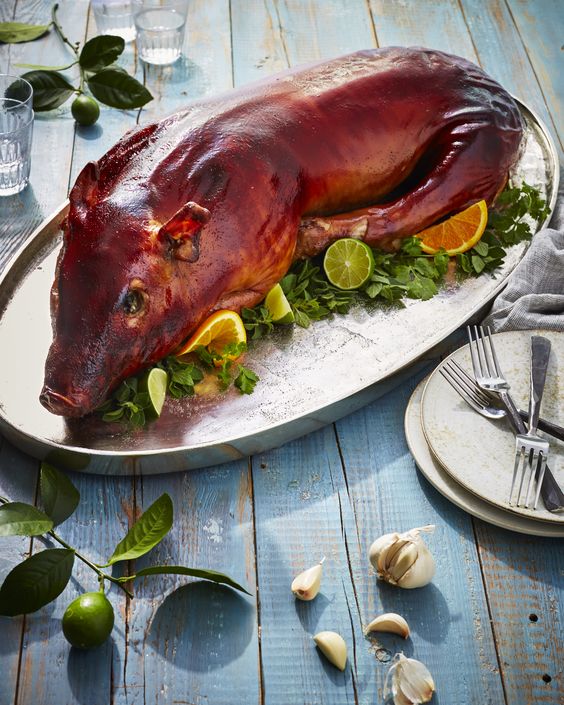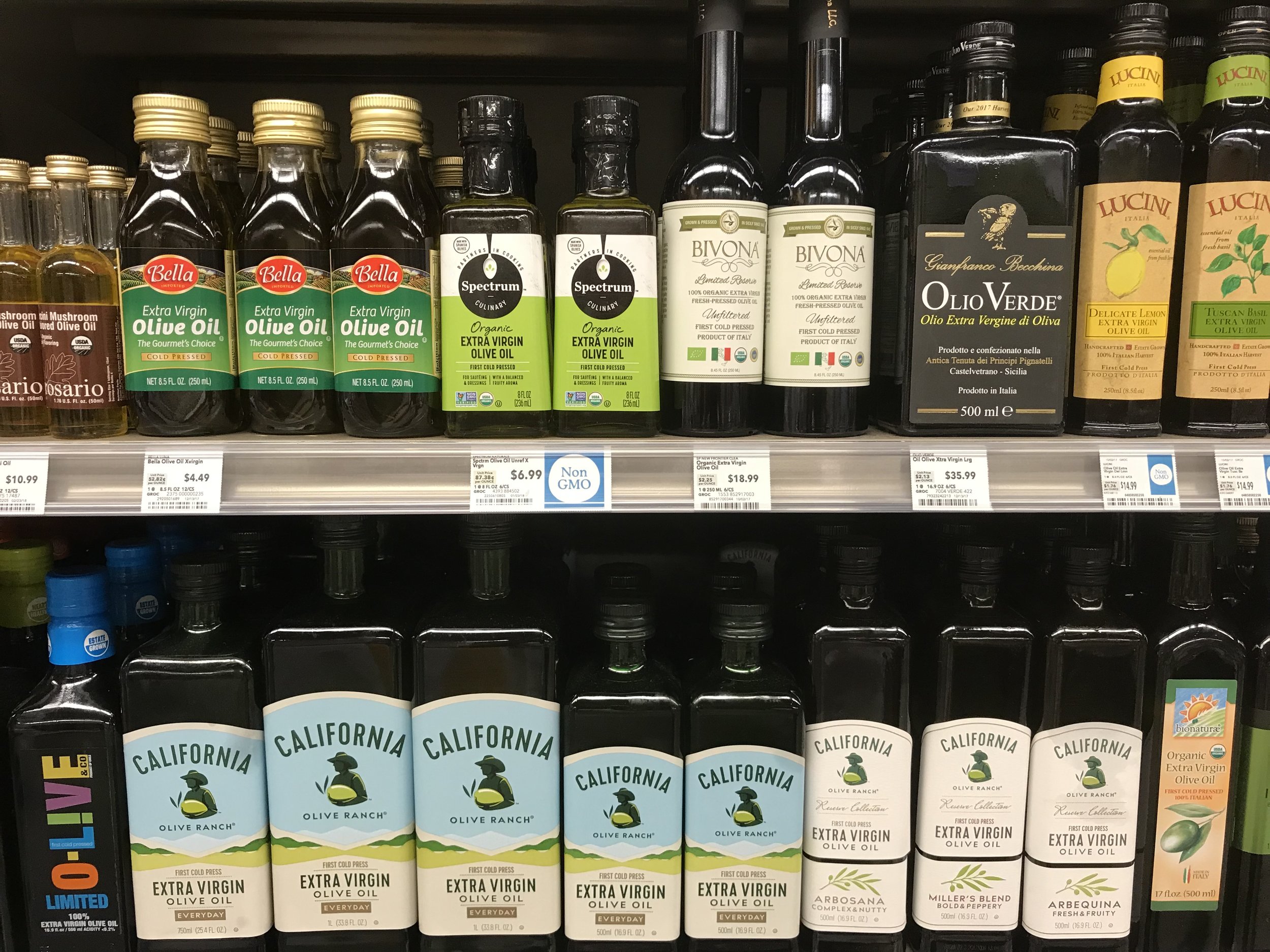An Oily Problem... Part I

As a toddler, adolescent and teen growing up during the mid-20th Century, in an Italian and Italian American household the use of olive oil for a variety of purposes was a regular part of our food preparation and eating. My maternal grandmother and my mother would buy the oil in gallon cans similar to what you find in today's grocery stores. I am trying desperately to research what the retail cost of a gallon of olive oil was in 1955. Unfortunately, my research to date has come up empty despite calls to the California Olive Oil Council and the North American Olive Oil Association (NAOOA) More on this and the role of these olive oil associations below and in my part two blog as confusion can reign supreme when discussing olive oils and olive oil associations.
I still make my grandmother's recipe for meatballs which calls for the near finished meatballs to be lightly sautéed in olive oil before their final slow simmered cooking in freshly made tomato sauce. In 2018 the use of olive oil for sautéing is an expensive proposition. One only has to search the global supply and demand numbers for the product to understand why today’s olive oil prices are so very high.
Olive oil is a staple of Italian and Mediterranean cuisines. It's been that way for thousands of years. So, what about its use in Italian and other cooking?
Dr. John Mariani in his “How Italian Food Conquered the World” writes; “Certainly the greatest boon to cooks everywhere was the availability of fine Italian olive oil, starting in the 1970s. Before then, olive oil was certainly imported, usually in one-gallon tin cans, but most was of mediocre or inferior quality, made from pomace (the olive oil solids after pressing) or mixed with other vegetable oils. The cooking fat of classic Cuisine and even everyday cooking was butter, butter, and more butter. the 1964 edition of the best-selling American cookbook “The Joy of Cooking” mentions olive oil only once to explain why it may become cloudy in a bottle. Julia Child “The French Chef Cookbook” published in 1968 did not waste a word on olive oil.
That was certainly not the case in our home nor in the home of our relatives and friends! However, Dr. Mariani is correct regarding the oil’s use or lack thereof.
A BBC News story from 2014 stated, “Today, multiple varieties of olive oil are available in every supermarket (in the UK), but was it really such an exotic ingredient 60 years ago? Judy Ridgway, a British olive oil expert, wasn't aware of it during her middle-class Manchester upbringing. "We didn't come across olive oil at all except from the chemist," she says. And they never cooked with it. "My mother used to rub it into her hair before she had it permed." The report continued. “Even by the late 1980s, says Ridgway, it was basically not used.”
BREAKING BAD
Fans of Mario Puzo and Francis Ford Coppola will recall that the fictional character, Vito Corleone, “The Godfather”, founded Genco Pura Olive Oil Company. In the imaginary account Corleone’s Genco Olive Oil Company becomes the largest importer of Olive Oil in the United States. Puzo created a “mob” world based on some historical facts. Most believe that Puzo’s character was based on the 1950s crime lord, Joe Profaci, who used his olive oil distributorship as a front for his illegal activities.
Joe Profaci, who died in 1962, was a New York City mafia boss who was the founder of what is today known as the Colombo crime family. He was a mafia boss for some thirty years. In order to protect himself from federal tax evasion charges, Profaci maintained his original olive oil business, it was named the Mama Mia Importing Company. Profaci was often called the "Olive Oil King". His personal fortune was built on Mafia crime however as the demand for olive oil skyrocketed after World War II, his business thrived.
Profaci’s grandson, Joseph R. Profaci, a Harvard Law School and New York University-educated attorney once served as the general counsel for the Italian American food company, Colavita USA. Colavita is based in New Jersey. It was founded by his father, John J. Profaci, who began a partnership with Enrico Colavita in 1980 to distribute the brand in the U.S. The grandson is now Executive Director of the North American Olive Oil Association. The Association (NAOOA) is one of many throughout the United States and the world. The NAOOA is the trade group of major American olive oil importers. I will be discussing these numerous Associations and their roles in my next blog on the fascinating subject of olive oil.
The need for such Associations, particularly those based in the US can be better understood as a result of two recent high-profile investigations regarding our favorite oil.
In 2016, The CBS News magazine ‘60 Minutes’ aired a segment on mafia involvement in Italian agriculture. It exposed its viewers to the despicable underworld of the olive oil and Italian food trade especially the “made in Italy” Bertolli brand. “Mafia copies of fine olive oil, wine and cheese have fueled an explosion of food crime in Italy,” reported CBS News correspondent, Bill Whitaker. the report featured an interview with Tom Mueller, the author of the “Extra Virginity” exposé. When Whitaker asked how much of the olive oil labeled “extra virgin” that reaches Americans is really not extra virgin, Mueller responded, “75% to 80%, easily.”
“You in many cases are getting lower grade olive oil that has been blended with some good extra virgin olive oil…you’re sometimes getting deodorized oil,” Mueller said. “They blend it with some oil that has some character to give it a little color, a little flavor…and they sell that as extra virgin. It’s illegal – it happens all the time.”
In the report CBS News shipped 3 bottles of olive oil found in an unnamed American supermarket to a formal olive oil tasting panel: Only one was found to be extra virgin. “They described one as lampante — the lowest quality olive oil. That brand happens to be one of the best-selling in America,” Whitaker said. That top-selling brand in the United States is, of course, Bertolli, the subject of a number of high-profile fraud investigation and multiple class action lawsuits.
Last Fall a lawsuit filed by the North American Olive Oil Association (NAOOA) against The Dr. Oz Show for false attacks against extra virgin olive oil (EVOO) sold in the U.S. was dismissed on March 3rd, 2017. This was before Profaci assumed the position of the Association’s Executive Director and was perhaps the incentive for the NAOOA to replace his predecessor. The NAOOA contended in its lawsuit that Oz’s claim that “[A] shocking 80% of the extra virgin olive oil that you buy every day in your supermarket isn’t the real deal” is unsubstantiated. In addition, the television doctor pushed common myths about olive oil quality and purity during the episode. NAOOA is appealing the dismissal.
Whole Foods 365
A fine olive oil blend notice the EVOO countries of origin but not the percentage of each to total.
Before discussing more on this topic in my second blog on this subject, a look at olive oils history is in order.
A BRIEF HISTORY OF OLIVE OIL
The pressing of olives to make olive oil dates back to about 3000 BCE and perhaps longer. It is generally agreed that the olive tree originated in ancient Greece and the near east particularly what is now Syria. Later this magical fruit tree spread throughout the Mediterranean region. Some archaeologists believe that wild olives were collected by Neolithic peoples as early as the 8th millennium BCE. Recent discoveries of ancient pottery fragments dating back to the early Bronze Age provided information regarding the use of olive oil as far back as the 12th and 11th century BCE Every great Mediterranean culture or civilization has a myth to explain the origin of the first cultivated olive tree. Romulus and Remus were said to have been born under an olive tree. Carol Field writes that Romans anointed their kings with olive oil and reserved the burning of olive wood the altars of the God
In an article written by Paul Vossen from the University of California, entitled, “Olive Oil: History, Production and Characteristics of the World’s Classic Oils”, Vossen states;
“In those areas (Greece, Egypt, and western Turkey), there are many archeological sites with olive-related findings, such as milling stones, decantation basins, storage vessels, frescos, and ancient writings. In the Palace of Knossos on the island of Crete, clay tables recording the trade of olive oil can be traced to 1700 BCE. In Turkey at Urla, near Izmir, there is an ancient olive oil processing facility dating to 600 BCE. Many clay vessels, called amphora, which were used to store and transport olive oil, can be found in ruins throughout the area.
Olives continued to move westward into Sicily, Sardinia, Italy, France, Spain, Portugal, Algeria, Tunisia, and Morocco. It is generally believed that the Phoenicians took olives to Spain and North Africa around 1000 BCE, and the Greeks imported the trees into Italy. The first recorded agronomic writings can be attributed to the Romans, and certainly the expansion and prosperity of the Roman Empire was instrumental in the spread of olive plantings and oil processing facilities all around the Mediterranean basin. Olives continued to move westward into Sicily, Sardinia, Italy, France, Spain, Portugal, Algeria, Tunisia, and Morocco.
ANCIENT PRODUCT CONTROLS
José Remesal Rodríguez (Lora del Río, Sevilla, 06-27-1948). Is Professor of Ancient History at the University of Barcelona since 1988. Has been unearthing a substantially sized hill in Rome called Monte Testaccio. It is comprised entirely of some 53 million ancient Roman olive oil jars ( amphorae). It covers some 220,000 square feet. When new the now broken pottery vessels were used to transport the oil. Interestingly, the Romans noted the weight, information about where the oil originated and the names of the people who bottled and weighed it! The ancient Romans, unlike their modern Italian ancestors, instituted a stringent trade control system with severe cost to violators.
Roman amphorae
Dr. Remesal tells us that many of the amphorae list family businesses such as “the two Aurelli Heraclae, father and son” and the “two Junii, Melissus and Melissa” as well as small groups of men, “the partners Hyacithus, Isidore and Ollio. His team has also been able to identify the state authorization of the shipment as well as if the oil was used for military or civilian use.
OLIVE OIL PRODUCTION
The largest producer of olive oil in the world cultivating more than 300 million trees is Spain. This is followed by Italy and Greece. In 2018, the cultivation of the olive tree has spread to all continents of the world with the exception of Antarctica. There are olive groves in China, Vietnam, North Central and South America. The overall production of oil around the globe has steadily grown since the beginning of the 20th century.
As an introduction to my next blog which will continue the discussion regarding Associations, recommendations regarding olive oils, California olive oils, its use in common recipes, etc., I am sharing the following from the National Consumers League.
The Oils
There were five out of 11 olive oils tested by the National Consumers League that passed both chemical and taste tests. NCL tested one bottle of each oil. The oils that passed are:
- California Olive Ranch
- Colavita
- Lucini Premium Select
- Trader Joe’s California Estate
- Trader Joe’s 100% Italian Organic
Lucini
One of the best values








